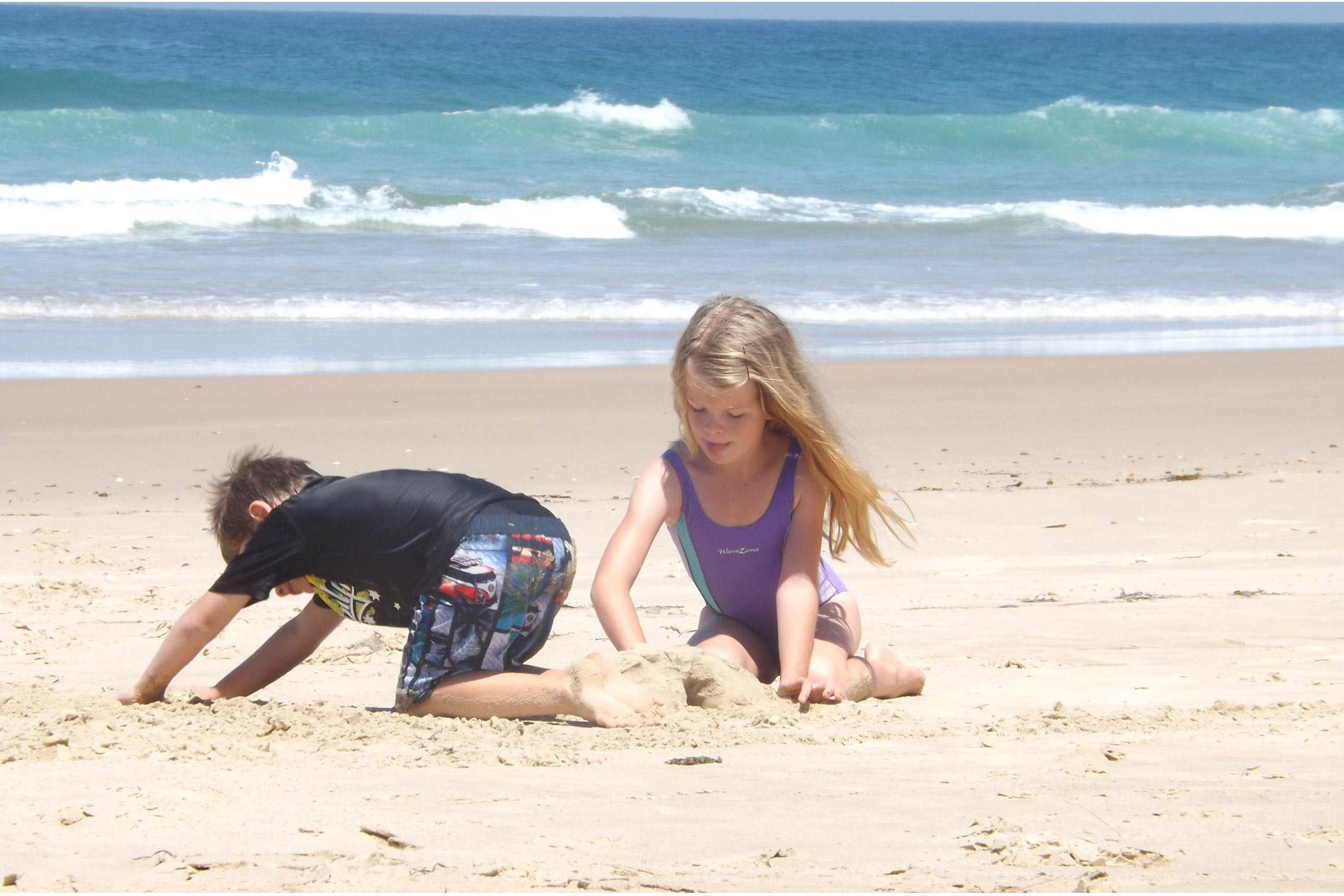
06 Jan Understanding and Surviving Rip Currents: A Beach-Goer’s Guide
As summer holidays kick in, the beaches become a popular destination for families and friends.
However, amidst the sun and sand, a silent danger lurks – rip currents. Recognizing the signs of these often underestimated hazards is crucial for ensuring a safe beach experience. In collaboration with Professor Brander’s insights, we’ve condensed vital information on identifying rips and responding effectively to emergencies.
The Basics: Rip currents often appear as deceptively calm, dark patches of water, leading many to mistakenly believe they are safe for swimming. Contrary to this assumption, these darker areas, nestled between breaking waves, could be potentially dangerous rips.
Many people arrive at the beach and assume the darker, greener areas are the safest place to swim because there are no waves breaking there.
But the reality is that breaking waves and whitewater mean that it’s shallower and that whitewater is moving water onshore. Those darker, green gaps between the whitewater mean it’s deeper and could be rip currents that take you out to sea. One way to remember it is using the saying: white is nice, green is mean.
“The sad thing about rip currents,” says Prof. Brander (aka Dr Rip ) , “is they are potentially avoidable. But on average, 25 to 30 people tragically drown every year in Australia each year after being caught in rips.
Identifying Rip Currents:
Channelised Rips:
- Most common and easily recognizable.
- Located in deep channels between shallow sandbars.
- Dark gaps amidst whitewater and breaking waves.
Boundary Rips:
- Common in deeper channels near headlands, rocks, or human-made structures.
- Can be almost permanent, known by names like ‘Backpacker Express.’
- Surfers use boundary rips to get quickly out beyond the breakers but they pose risks for swimmers near rocks and structures.
Flash Rips:
- Occur quickly and unpredictably.
- Not confined to deep channels; challenging to spot.
- Caused by random large waves, dissipate rapidly.
Dr Rip says flash rips are caused by some random large waves, or a set of larger waves that break, which makes them impossible to predict, and very difficult to study.
“Every now and then particularly when the waves are messy, you get a couple of big waves break, the water piles up and it pushes a rip current out called a flash rip. You’ll see the turbulent whitewater, you’ll see clouds of sand going out to sea and if anyone’s in that region, they can easily be caught and taken offshore.
“A flash rip may only last for a minute or so and then it disappears. But others can quickly develop elsewhere along the beach. They’re very difficult to spot because they form quickly and don’t last very long. So it’s something you should be aware of, and also remember they can also often form off the back of sandbars.”
Surviving a Rip Current:
Relax:
- Panic is the real danger; rips only take you for a ride.
- Rips don’t pull you underwater; no undertow myth.
- They might recirculate back into shallower water.
Don’t Swim Against It:
- Swimming against the fast-flowing rip is futile.
- Tiring out and panic are likely outcomes.
Float:
- Relax and float by treading water or lying on your back.
- Rip will often stop beyond breaking waves, potentially recirculating to shallower water.
- Traditional advice of swimming parallel applies to strong swimmers only; floating is generally safer.
Signal for Help:
- Wave or call for assistance.
- Lifeguards, lifesavers, and surfers can be crucial in rescues.
No One Around?
- Float and remain calm.
- Swim parallel to the beach if you’re a strong swimmer; aim for areas with breaking waves.
Bystander Rescues:
- Rushing into the water poses dangers; take a moment to assess the situation.
- Call for help or send someone to get assistance.
- Grab a flotation device; look for nearby boogie boards or surfboards.
- Conserve energy; don’t run or swim hastily.
- Keep the distressed person calm; use the flotation device for support.
- Wave for help or move towards breaking waves, indicating shallower water.
If you’re alone on the beach, and there’s no one around, and you’re not a surfer or an experienced ocean swimmer, and you think it might be OK to go in the water – don’t!
“If you get stuck in a rip, there’s no one going to be able to save you. So if in doubt, don’t go out.”
Understanding rip currents and adopting Professor Brander’s advice can significantly enhance beach safety. Whether enjoying the waves or witnessing someone in distress, being informed and prepared ensures a safer and enjoyable beach experience. Remember, in doubt, it’s always better to stay out of the water.
Professor Rob Brander – aka Dr Rip – is a surf scientist with UNSW Sydney’s School of Biological, Earth and Environmental Sciences. He has studied the rip current hazard on beaches from both physical and social science perspectives for the past 30 years. See more details here.



